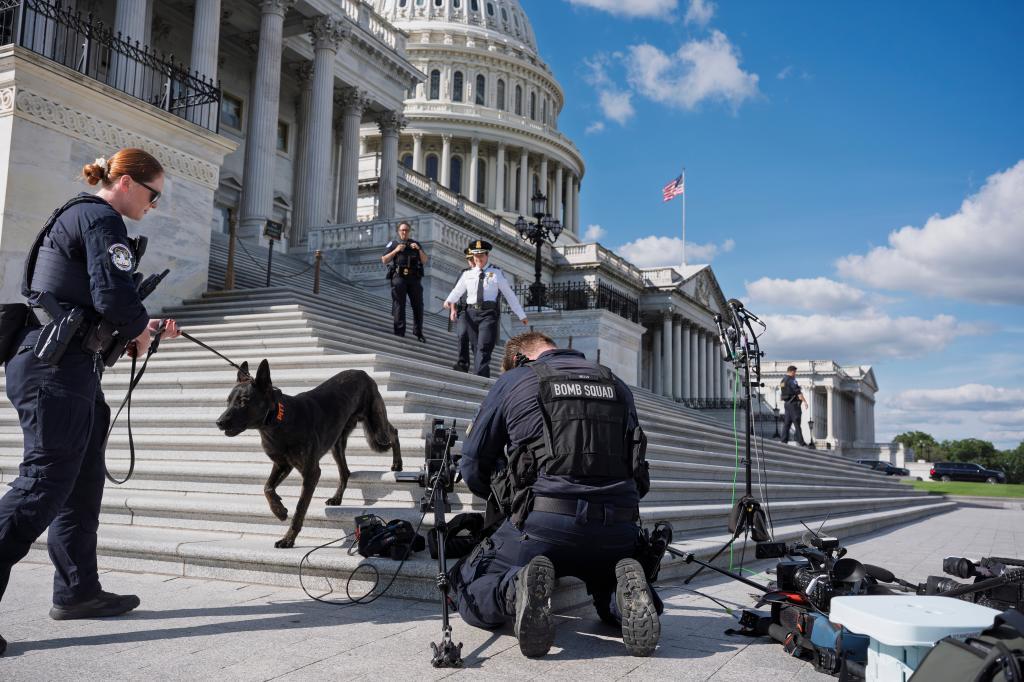Republicans supported a short-term measure to fund the government generally at current levels through Nov. 21, but Democrats blocked it, insisting the measure address their concerns on health care. They want to reverse the Medicaid cuts in President Donald Trump's package of tax breaks and spending reductions from the summer, and they want to extend tax credits that make health insurance premiums more affordable for millions of people who purchase through the marketplaces established by the Affordable Care Act.
Republicans called the Democratic proposal a nonstarter that would cost taxpayers more than $1 trillion.
Neither side shows any signs of budging.
Some federal agencies have announced furloughs, and some government services could be curtailed until new spending authority is approved. Trump also has raised the prospect of permanently eliminating some government positions.
The government shutdown could have larger ripple effects in some communities than others, depending on the extent to which they are reliant on the federal government for jobs and services.
The full scope of a federal shutdown depends, in part, on how long it lasts and which government functions are affected. Some federal benefit programs, such as Social Security and Medicare, generally aren't affected because they are funded outside the normal appropriation bills.
Each federal agency has the authority to designate certain personnel as essential, meaning they would continue to work even during a funding gap. Military troops would remain on the job, for example, though they wouldn't get paid until Congress passes a new spending plan that is signed by the president. Others who generally keep working during a shutdown include air traffic controllers, federal law enforcement officers and U.S. Postal Service employees.
Federal shutdowns usually don't do much economic damage. There are reasons to worry about this one
The federal shutdown will cut off vital economic data, including Friday's jobs report
The government shuts down, and Trump goes online — very online
Republicans are relishing a role reversal in the shutdown fight. Can Trump keep them united?
Everybody in Washington hates a shutdown until it becomes a useful tool
EPA's job is to protect America's air, water and land. Here's how a shutdown affects that effort
Trump uses government shutdown to dole out firings and political punishment
FEDERAL AGENCY FURLOUGH PLANS
View this AP graphic which shows employee furlough plans for federal agencies that have disclosed their contingencies in response to a lapse in congressional funding. The embed code for this graphic can be found at the end of the guide.
FIND YOUR STATE: FEDERAL EMPLOYEES
The District of Columbia has the greatest number of federal civilian employees, with about 162,000 according to a September report by the Congressional Research Service. The report is based on assigned work places for employees as of a year ago, in September 2024, and excludes military personnel, certain law enforcement and judicial employees and U.S. Postal Service workers. The exact figures may have changed, because the data predates employment decisions made during Trump's current term.
The top 10 states, with the approximate number of federal civilian employees, are:
1, California: 150,000
2, Virginia: 147,000
3, Maryland: 144,000
4, Texas: 130,000
5, Florida: 95,000
6, Georgia: 81,000
7, Pennsylvania: 66,000
8, Washington: 58,000
9, Ohio: 56,000
10, New York: 54,000
FIND YOUR DISTRICT: FEDERAL EMPLOYEES
The Congressional Research Service report also provides estimates of federal civilian employees in each of the 435 U.S. House districts. These estimates are based on employees' residences from a 2024 U.S. Census Bureau survey. Thus the figures are comparable to the statewide totals. AP created a map with this data that includes all House districts and their respective representatives. The embed code for the map can be found at the end of the guide.
The House districts with the greatest number of federal civilian employees are:
1, Maryland, District 5: 82,651
2, District of Columbia, At Large: 73,905
3, Virginia, District 8: 73,206
4, Maryland, District 8: 55,711
5, Virginia, District 7: 55,281
6, Virginia, District 11: 52,043
7, Maryland, District 3: 45,262
8, Maryland, District 4: 44,436
9, Maryland, District 6: 37,390
10, Virginia, District 10: 36,737
FIND YOUR STATE: MILTARY PERSONNEL
The Department of Defense maintains a database of military personnel by state which was last updated in June.
The states with the greatest number of active-duty military personnel are:
1, California: 160,074
2, Virginia: 122,254
3, Texas: 115,354
4, North Carolina: 95,437
5, Florida: 66,634
6, Georgia: 65,259
7, Washington: 57,431
8, Hawaii: 45,445
9, South Carolina: 37,349
10, Colorado: 35,928
— Are there federal agencies that employ people in your area? If so, some government employees may have to work without pay, though they would receive retroactive wages once a government shutdown ends. Others may be furloughed from their jobs. Interview workers to get their thoughts about a shutdown and see how they plan to get by in the meantime.
— If there is a significant federal employer in your area, talk to local private sector business leaders to gauge any potential ripple effects. Are owners or managers of restaurants and retail stores concerned about a potential drop in customer spending during a federal government shutdown? Do officials at the local chamber of commerce have any thoughts about it?
— Do nonprofit organizations or utility providers have plans to help federal workers who may go without paychecks? Talk with officials at local food pantries. Check with water, electricity and gas providers to see whether they have assistance programs that could waive late fees for bills.
— Check with officials in your state government to see whether they expect certain programs to be affected by a federal government shutdown. Some states may have unspent federal grant funds, which could allow them to continue funding programs for a while even if federal funding is cut off.
